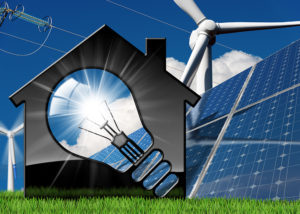Introduction
Planning a transmission system for an evolving energy landscape
As a transmission-only utility, we are committed to maintaining a safe and reliable electric transmission system in the Upper Midwest and providing non-discriminatory access for all forms of generation. To accomplish that, we work closely with our customers to provide viable solutions and plan for a system that supports their needs – along with the needs of their energy consumers. Public policy and concerns over climate change are advancing the transition of generation to renewables, which means developing appropriate and cost-effective system technologies to align with the evolving energy landscape.
We continue to work with MISO on the significant uptick in the generation-to-transmission requests now in the queue. Presently, there are 109 proposed projects in the generation queue of ATC’s service area, totaling over 14.1 gigawatts. The massive influx of these projects within our service area requires in-depth analysis by our planners to ensure we have adequate projects and time to interconnect these renewable generation resources. Meanwhile, the distribution-to-transmission requests from our customers remain strong, as does the addition of distributed connected renewables. We anticipate additional regulatory requirements for all these projects, along with the transmission solutions that support them.
To further stabilize electric reliability across the Upper Midwest, new transmission infrastructure is needed to help move all forms of power from where it’s generated to where it’s needed. MISO’s Board of Directors in July 2022 approved Tranche 1 of the Long-Range Transmission Plan projects, which will address the transformative changes of the generation fleet in the coming years. Our planners have been working with MISO for several months to assess these projects, including the timing and coordination of them with the G-T and D-T interconnection requests in the queue.
Planning for an evolving system also means that traditional pole and wire configurations are not always the selected alternative. Battery storage, such as our forthcoming Waupaca Area Storage Project in Waupaca, Wis., is the first Storage as Transmission Only Asset in the MISO footprint and will be placed into service in early 2023.
We also study other technologies applicable to our system, and included in this report’s project list for the first time is a proposed STATCOM solution – a static synchronous compensator – located near Marquette, Mich. To mitigate challenges in regulating system voltage, we monitor the baseline generation retirements combined with the flexibility and intermittency of remaining resources to identify the need to apply STATCOMs or other voltage control devices on the system. Finally, industry trends, such as changes to the electric vehicle fleet along with distributed electric resources, are driving how we monitor baseload changes within our service area to apply the appropriate solution to the grid.
While studying new projects, we evaluate the need for maintaining the lifecycle of existing assets and aging infrastructure. Exposure to weather and avian species adversely impacts and deteriorates wooden poles. For example, these conditions were the driver for repairs that were completed on the Bayport – Pioneer Project northeast of Green Bay, Wis., where we converted 69-kV assets to 138-kV. Conducting surveillance of structures in the air and on foot throughout our service area to identify these renewal projects is a perpetual and methodical process.
We also monitor and test substation equipment at regular intervals, assessing the risk of maintenance concerns and addressing those with the potential to cause an outage or higher repair costs. Simultaneously, we see ongoing supply chain issues creating cost pressures to maintain or replace assets. We take great strides in working to plan our asset renewals in ways that optimize our resources and minimize the lifecycle cost.
To efficiently monitor the functionality of our system and to meet the data needs of the future, we continue to invest in communications infrastructure. Evaluating our O&M costs for communication needs, such as SCADA or security, is a process that we strive to continuously improve upon.
Our evolving energy landscape is the basis for projects identified within this 10-year assessment. While the generation shift is occurring rapidly, what hasn’t changed is our commitment to our customers and our commitment to maintaining a safe and reliable electric transmission system.
Transmission investments
Projections from past and current Transmission System Assessments
| 2018 | 2019 | 2020 | 2021 | 2022 | |
|---|---|---|---|---|---|
| Specific Network Projects | $0.5B | $0.4B | $0.4B | $0.6B | $0.5B |
| Regional Multi-Value Projects | $0.3B | $0.2B | $0.2B | $0.2B | $0.2B |
| MISO Long Range Transmission Plan | - | - | - | $0.0B | $0.9B |
| Asset Renewal | $1.5B | $1.7B | $1.8B | $2.2B | $2.8B |
| Other Capital Categories | $0.5/$1.1B | $0.6B/$1.3B | $0.5B/$1.1B | $0.5B/$1.2B | $0.7B/$1.9B |
| Total 10-Year Capital Cost | $2.8/$3.4B | $2.9B/$3.6B | $2.9B/$3.5B | $3.5B/$4.2B | $5.1B/$6.2B |
Tom Dagenais
Director, System Planning
Jim Vespalec
Director, Asset Planning & Engineering


